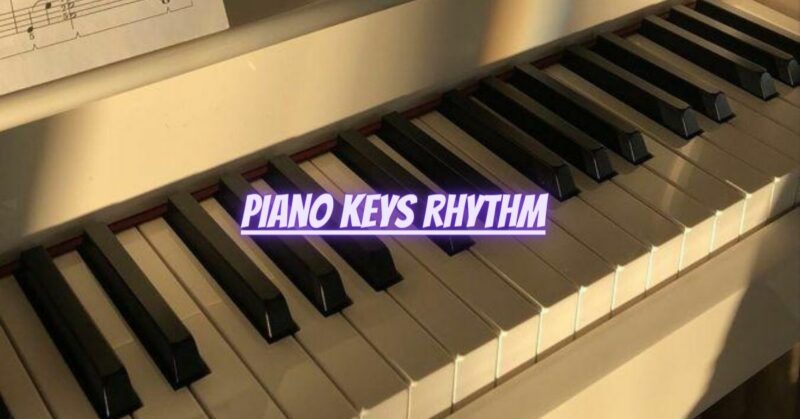Rhythm is the heartbeat of music, and as a pianist, understanding and internalizing piano keys rhythm is crucial for delivering captivating and expressive performances. It involves a deep sense of timing, pulse, and the ability to accurately execute various rhythmic patterns. In this article, we’ll explore the significance of piano keys rhythm, effective techniques to develop rhythmic precision, and how to infuse your playing with the infectious energy of a well-timed beat.
The Importance of Piano Keys Rhythm:
- Musical Flow: Rhythm sets the pace and flow of the music, creating a sense of continuity and coherence in your playing.
- Dynamic Expression: By varying the intensity and tempo of the rhythm, you can convey different emotions and add depth to your interpretations.
- Accompaniment Skills: Understanding rhythm is essential for providing solid accompaniment to singers and other instrumentalists.
Effective Techniques for Developing Piano Keys Rhythm:
- Metronome Practice: Practice with a metronome to develop a steady sense of rhythm. Start with slow tempos and gradually increase the speed as you gain confidence.
- Clapping and Counting: Clap or tap your hands while counting the beats of a piece. This helps internalize the rhythm and improves your ability to stay in sync with the music.
- Rhythmic Exercises: Incorporate rhythmic exercises into your practice routine. This could involve playing scales or simple melodies with various rhythmic patterns.
- Divide and Conquer: Break down complex rhythms into smaller parts. Practice each section separately and then gradually piece them together.
Expressive Rhythm Playing:
- Accents and Dynamics: Experiment with different accents and dynamics to emphasize certain beats or notes, creating a more engaging and expressive performance.
- Swing Feel: In genres like jazz and blues, explore the swing feel, which involves subtly altering the rhythm to give the music a laid-back and groovy vibe.
- Rubato: In slower, lyrical pieces, use rubato to add flexibility and expression to the rhythm, while still maintaining the overall tempo.
Tips for Incorporating Piano Keys Rhythm into Your Playing:
- Listen Actively: Pay close attention to the rhythm in the music you listen to. Observe how different musicians interpret and execute rhythmic patterns.
- Imitate and Adapt: Emulate the rhythmic feel of your favorite recordings and adapt them to fit the style of music you are playing.
- Practice with Backing Tracks: Play along with backing tracks or recordings to practice staying in time with other instruments and musicians.
Patience and Consistency:
Developing strong piano keys rhythm takes time and consistent effort. Be patient with yourself and maintain a steady practice routine to see significant improvement.
Conclusion:
Piano keys rhythm is the heartbeat that breathes life into your music. By mastering rhythm, you create a foundation upon which to build captivating performances that move and inspire your audience. As you delve deeper into the rhythmic aspects of piano playing, you’ll discover new levels of musical expression and find joy in the rhythmic interplay of notes. So, embrace the rhythmic journey, let the music guide your hands, and infuse your piano playing with the pulsating energy of a well-crafted rhythm. Happy playing!

